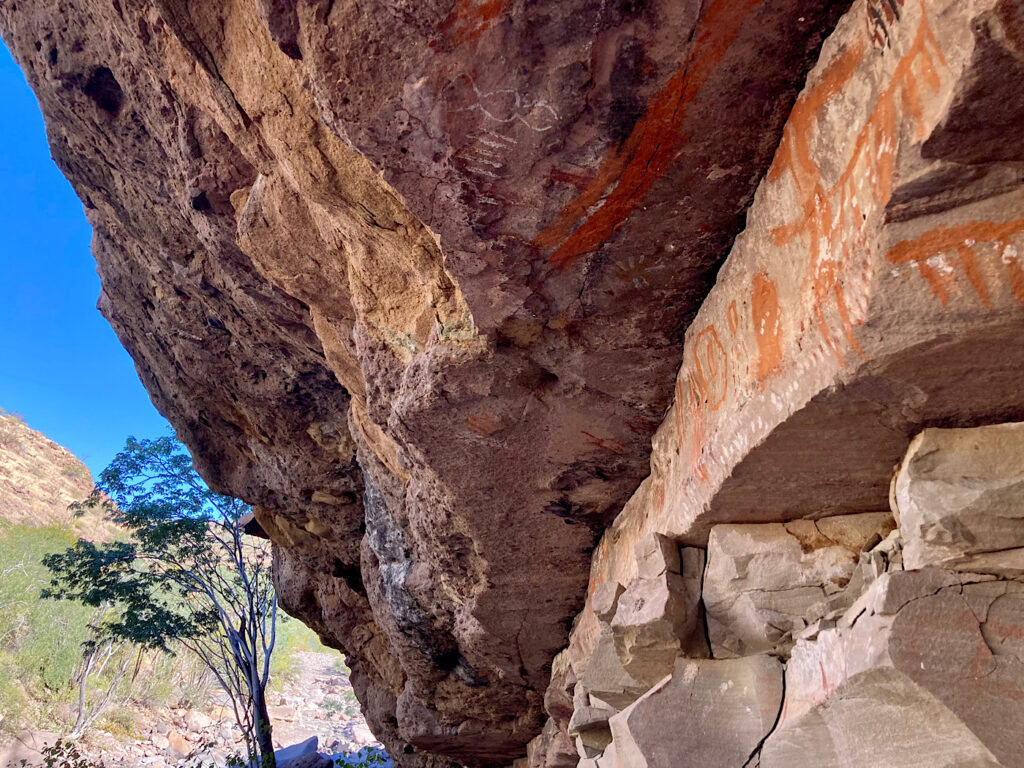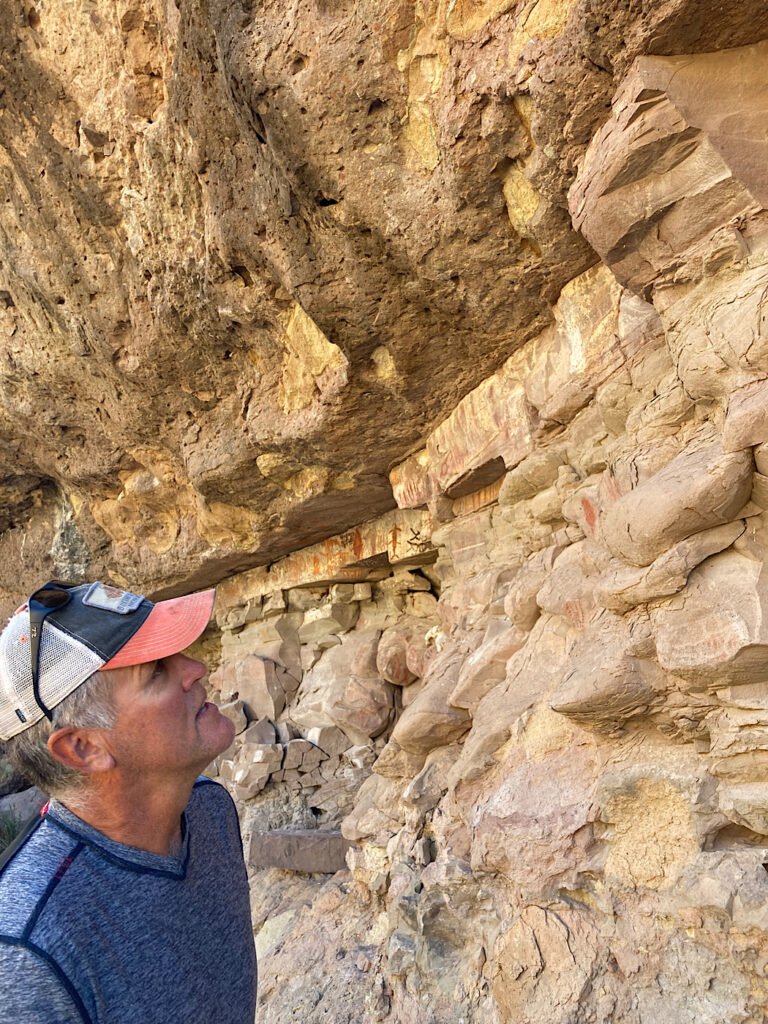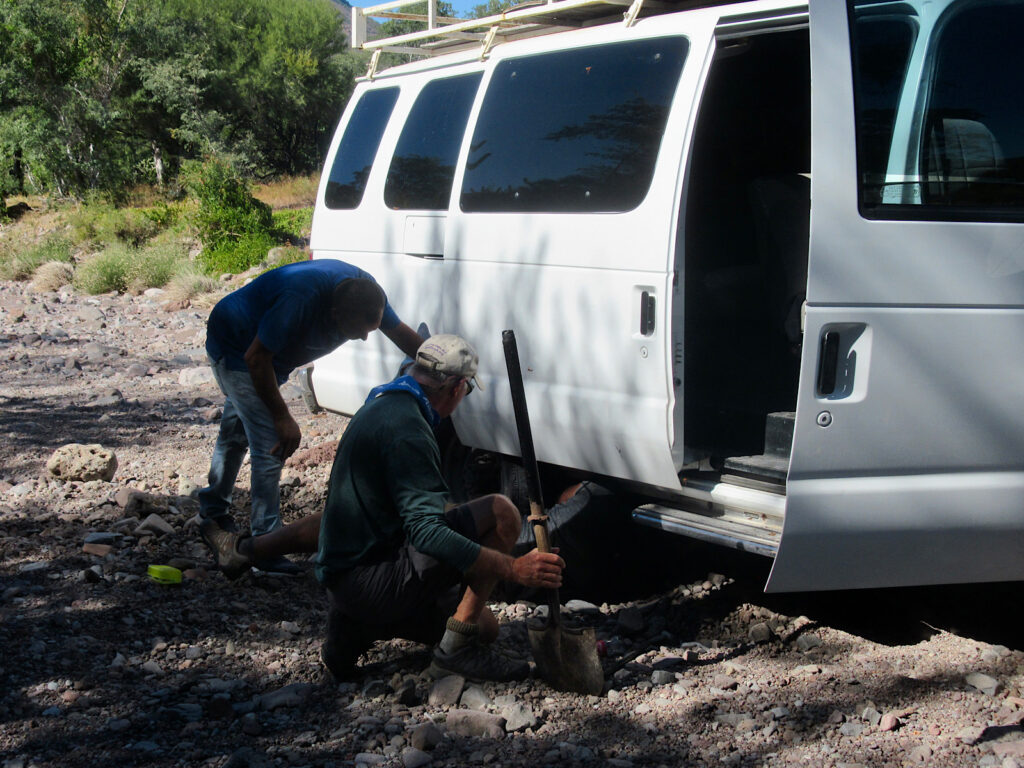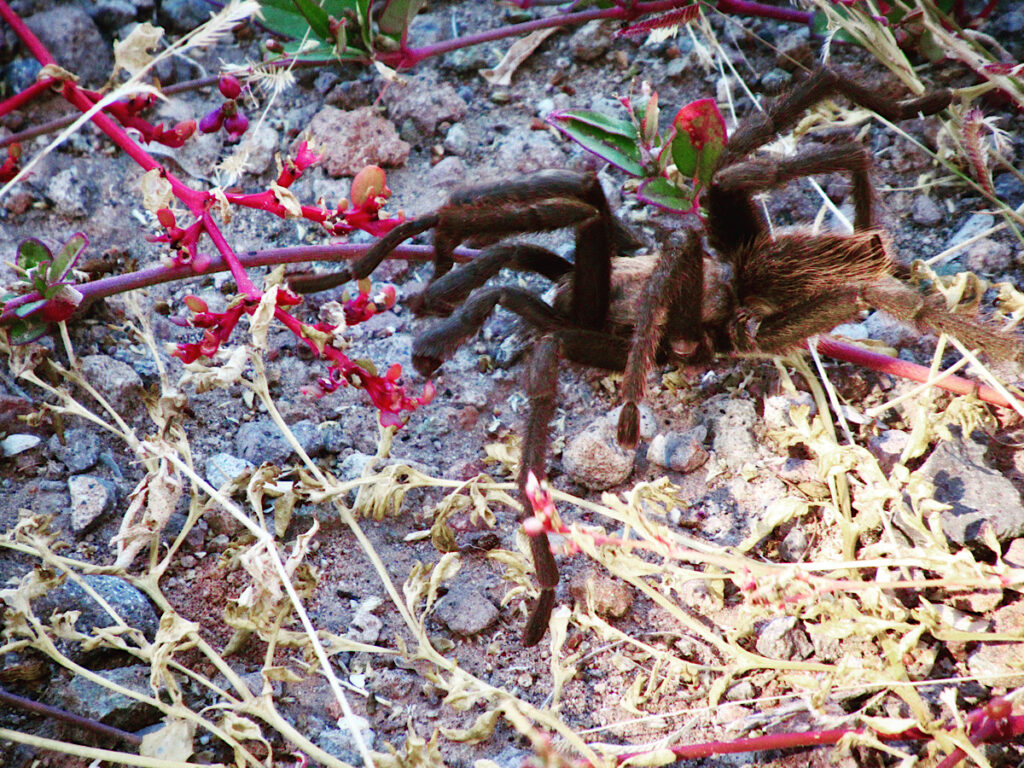Baja cave painting tours are popular trips for people travelling to the Baja Peninsula in Mexico. Why? They are always an adventure. You hike into spectacular desert canyons. It is an opportunity to learn more about local flora and fauna. You learn about ancient cultures. And best of all, these cave paintings – and pecked rock art panels – allow you to take on the mindset of an archaeologist as you search for meaning behind the images.
Disclosure: This post contains affiliate links. If you buy something from one of our affiliates, we receive a small commission at no extra charge to you. We appreciate your support!
Table of Contents
Where Can You Experience the Adventure of Baja Cave Painting Tours?
We’ve been on several different types of Baja cave painting tours on our trips down the Baja California Peninsula:
Biking and hiking into the cave paintings at Montevideo near Bahia de los Angeles.
Travelling by mule and foot to access Cueva Pintada and Cueva de las Flechas in Sierra de la San Francisco.
Day hiking on a guided tour with Loreto Sea and Land Tours to explore La Pinguica – also commonly called Canipole cave paintings – in the Sierra Gigantas.
Baja has an abundance of rock art – from caves painted with pictographs to arroyo boulders and cliffs pecked with rock art called petroglyphs. Loreto and Mulege are popular RV travel destinations. They also make great bases for exploring the rock art of Baja’s peninsula.

Keep track all your cave tours, or any other tours and RV campsite reservations with the 2025 RV Trip Planner available in the TimeTravelTrek Etsy Shop!
On our most recent day trip to Canipole, we took an organized cave painting tour because road access was questionable. The recent hurricane scoured the arroyos and approaches, making the drive in rather exciting – especially when the van decided to hang out with a big bad rock!
There are dozens of options for Baja cave painting tours and adventures, but before you go choose the type of experience you’d like to have – whether it’s a day trip or multi-day adventure, a guided cave painting tour or non-guided exploration. Note that many areas require a guide for access across private land.
How Far Do You Have to Hike to See Rock Art in Baja, Mexico?
It’s a given that you will have to hike at least a short distance to see rock art in Baja. Some cave paintings can be found close to roads, but many are not. On our trip to La Pinguica with Sea and Land Tours we walked for close to 4 kilometres (2.5 miles) on uneven river rock, through sand and along faint paths to reach the cave paintings. The company advertises that “this is not a good hike for folks with bad knees or weak ankles.” Rightfully so!
Before you head out on your cave painting tour, research the distance and terrain you need to hike to reach your destination. Make sure it matches with your abilities. Nothing puts a bigger damper on a great adventure more than a twisted ankle.
What Plants and Animals Will You See on a Baja Cave Painting Tour?
Most of Baja California is Sonoran Desert. Typical plants include cardon, cholla and a host of other cacti. You may find the unique Boojam and Elephant trees. In spring – and after hurricanes – wildflowers of every shape and colour flame across the desert. We appreciated the sight and scent of desert lavender in late November.
Our guide Luis shared his knowledge of historic – and current – medicinal uses of local flora. A tea made from cardon is used to treat kidney stones. The seeds of the elephant tree are roasted and ground and made into a paste help clear chest congestion. Sap from the lomboy tree is an antiseptic that dries like a clear bandaid for wounds – and it’s good for dry, chapped lips. I was too chicken to try after Luis said it was like a glue!
We saw one garter snake – and Luis warned us that although the adult rattlesnakes were probably all down for the winter, the young ones could still be active. I walked very carefully! We did see a lone tarantula making its way through the drying grasses. Puma tracks, toad sightings and lizards, doves, ever-present vultures and a few small birds hiding successfully in the chaparral made up the rest of our wildlife encounters.
Who Made This Ancient Art?
Luis told us that the cave paintings at Canipole were around 2,000 years old. Shaded from sun and protected from the ravages of flooding, a few were still brilliantly colored. Although the vast majority were red and black, there was a sprinkling of green pigments – which is rare. Prehistoric hunter gatherers travelled from the coast to the mountains and back again.
Images at Canipole include sharks, whales, manta rays, fish, lobster, snakes – some pecked in the boulders beside the creek, other painted on the cave wall. There are also astronomical observations – from stars to the sun to a comet. Handprints and tiny human figures compete with tortugas (turtles), short straight lines in row and checkerboard images. This site is both smaller in size and has smaller, more detailed images than those we visited in Sierra de la San Francisco where art dates upwards of 7,000 years old.

What is the Meaning Behind the Cave Paintings and Pecked Rock Art Panels?
One stone held petroglyphs of a hunter and a deer and the sun and a shaman. How you interpret these images is based on a combination of your own knowledge of Baja’s prehistoric past, information given to you via your guide and any archaeological training or education you might have. Sometimes though it’s fun just let the imagination go wild.
Little is known about the true meaning of this precious art but there are many theories. Harry Crosby’s book “Cave Paintings of Baja California: Discovering the Great Murals of an Unknown People” provides an excellent starting place!
5 Reasons to Experience Baja Cave Painting Tours
- They are always an adventure.
- You hike into spectacular desert canyons.
- It is an opportunity to learn more about local flora and fauna.
- You learn about ancient cultures.
- This rock art allows you to take on the mindset of an archaeologist as you search for meaning behind the images.
What are you waiting for? Add a cave painting adventure to your itinerary today!

When You Go
When you go without a guide, always check about access with locals before heading out. At Bahia de las Angeles, we talked to our campground host who told us to contact the property owner for a key. All good.
In Sierra de San Francisco, we had to obtain permits and hire a guide and mules. Read the posts for details.
For our day trip to Canipole, we booked directly with Loreto Sea and Land Tours.






Leave a Reply